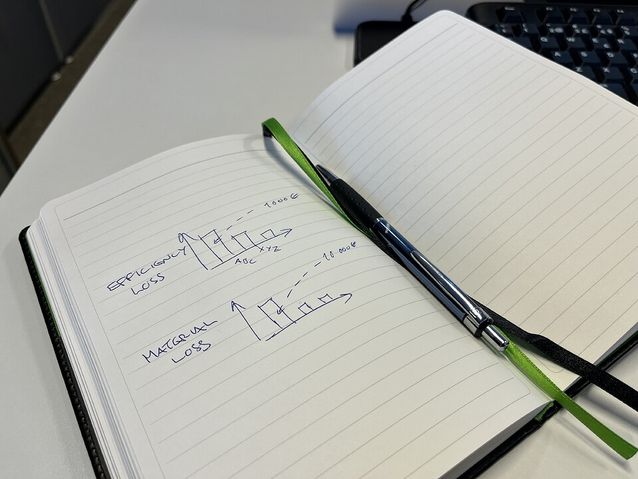Productivity can mean many different things depending on, for example, the industry or process. In a production plant, productivity often refers to the ratio of the amount produced to the number of employees, the number of pieces of equipment or some other typically fairly constant unit for measuring inputs. For example, a production line’s one-day productivity can be its daily production volume divided by the number of people involved in production. Thus, productivity can be improved by either increasing the number of units produced per day or reducing the number of people involved in the work.
As I stated in my previous articles, developing people to perform more productively and produce better quality is at the heart of continuous improvement models. In keeping with harnessing rather than abandoning people’s skills, this article does not look at strategies for improving productivity by reducing headcounts. This can also be seen as paradoxical in the sense that one of the principles of continuous improvement quality promotion is the removal of the human factor from the process. However, workers freed from one process can work elsewhere. They can dedicate the time saved to improving processes’ productivity or quality control’s thoroughness and accuracy.
Efficiency influences productivity. There are two main types of efficiency: resource efficiency and flow efficiency. Typically, resource efficiency refers to how well existing resources are utilised. In the case of an industrial line, this may mean reducing machine breakdowns, short stops or maintenance time. By reducing these losses, the resource, that is, the production line, is available for production for as much time as possible. Flow efficiency in the context of a production plant is defined as how much a flow unit, such as a product, is refined by value-creating activities as it passes through processes and how long those activities take. Although not the most commonly used, cost-effectiveness is an important indicator of productivity. The cost to produce a certain amount reflects a process’s overall efficiency. The essence of continuous improvement is reducing losses, and reduced losses manifest in cost-effectiveness.
In World Class Manufacturing, productivity strategy planning is essentially carried out under the Focused Improvement pillar as well as under the Autonomous Maintenance and Planned Maintenance pillars.
The different pillars cover different indicators and areas of responsibility. Focused Improvement is the pillar that looks at productivity in processes and equipment efficiency as part of the big picture. It calls for understanding not only the production lines but also the bottlenecks of the entire production plant and locating inefficiencies through metered production data. Pillar uses that understanding and data to propose continuous improvement development teams or propose other measures for the losses. The World Class Manufacturing Steering Group then approves, prioritises and supplies the teams.
The Focused Improvement pillar trains manufacturing plant development teams in, for example, twelve-step Kaizen and SMED (single-minute exchange of die) methodologies. In small manufacturing facilities, the Focused Improvement pillar is often associated with the methodologies of the Cost, Logistics and/or Supply Chain pillars. In this way, the overall picture of the Pillar can be deepened, and Cost methodology introduces one important aspect: money. As a result, the priorities for reducing losses can be more clearly prioritised from a cost-effectiveness perspective.
When looking at production as a whole, the Focused Improvement pillar considers the following:
- production must be continuous;
- production as a whole is more important than any single line, device or machine;
- complexity of production and material properties; and
- operators must be able to use a wide range of equipment (increasing multi-skilled-ness).
According to the World Class Manufacturing and Total Productive Maintenance methodologies, the Focused Improvement pillar’s five main steps are:
- assess the current situation;
- improve current standards;
- develop workforce productivity;
- develop operational flexibility; and
- set up a zero losses system.
Aurelia Turbines has taken the Focused Improvement and Cost pillars’ first steps. We combined their methodologies and scaled the depth of the methodology to suit Aurelia Turbines’ needs, resources and maturity in terms of continuous improvement. We followed the five main steps of World Class Manufacturing in developing our methodology. We are currently laying the groundwork for when we start serial production. We are focused on standardisation and creating processes and systems. Only a standardised system – one with low production variance – can be properly enhanced. Standardising now will create a good basis for value stream mapping, analysing bottlenecks and forming various continuous improvement development teams in the future.
Stay tuned. Our story continues next month.


